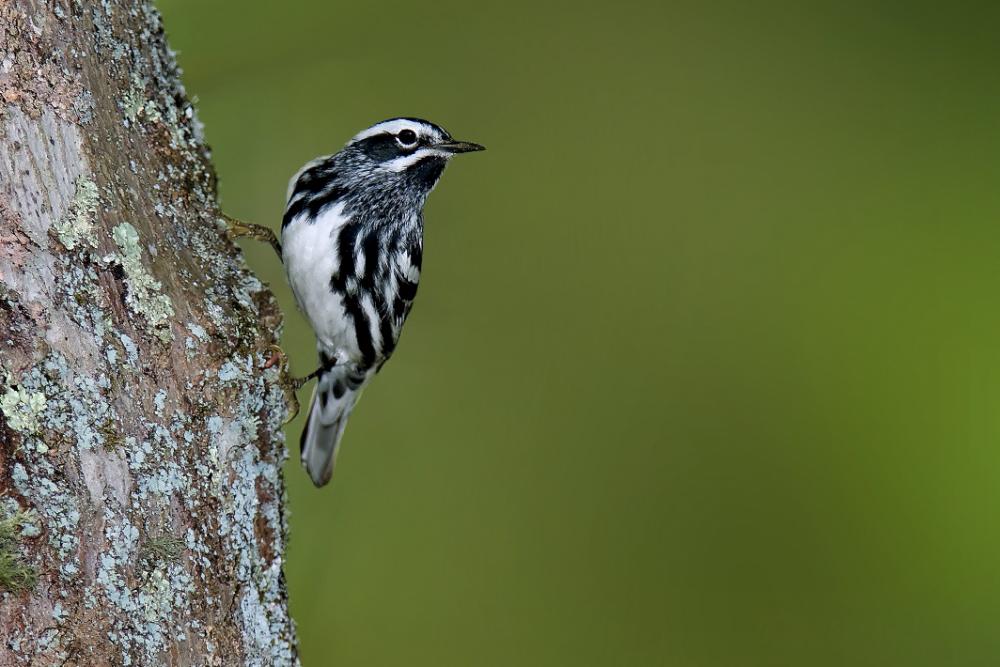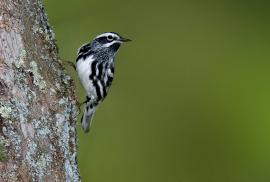Guide to Boreal Birds
Overview
This conspicuous warbler arrives in the North early in spring, usually by mid- to late April. It is known for its habit of creeping around tree trunks and along larger branches in search of insect food in crevices in or under the bark; hence its old name, "Black-and-white Creeper." Unlike the Brown Creeper, which only moves up a tree, this species can climb in any direction.
Description
5" (13 cm). Black and white stripes, including crown. Male has black throat; female's throat white. Creeps on tree trunks.
Voice
A thin, high-pitched, monotonous weesy-weesy-weesy-weesy, like a squeaky wheelbarrow.
Nesting
4 or 5 purple-spotted white eggs in a ground nest composed of leaves, grass, and rootlets, and lined with hair and fern down. Nest is set at the base of a tree, stump, or rock.
Habitat
Primary and secondary forests, chiefly deciduous. During migration, parks, gardens, and lawn areas with trees and shrubs.
Range/Migration
This species winters from the extreme southern United States (Texas and Florida) to the Peruvian Andes. It displays extreme variability in the types of habitats in which it is found both during winter and on migration. The only requirement seems to be the presence of trees on which this bark specialist can feed. It is among the earliest species to reach the U.S. Gulf coast in spring, often appearing in early March in significant numbers. This is one of the most common "vagrant" warbler species in spring along the west coast, perhaps indicating that migratory routes of the westernmost populations are scattered throughout the western states.
Breeds from southern Mackenzie, northern Alberta, and central Manitoba east to Newfoundland, and south to southern United States east of Rockies. Winters from southern parts of Gulf Coast states southward.



